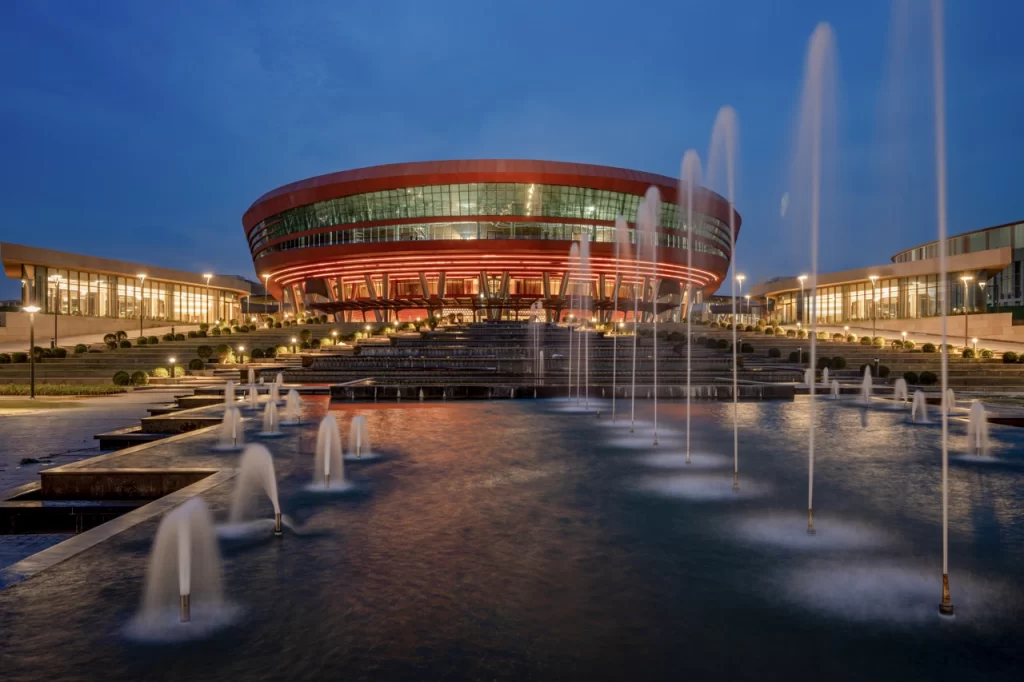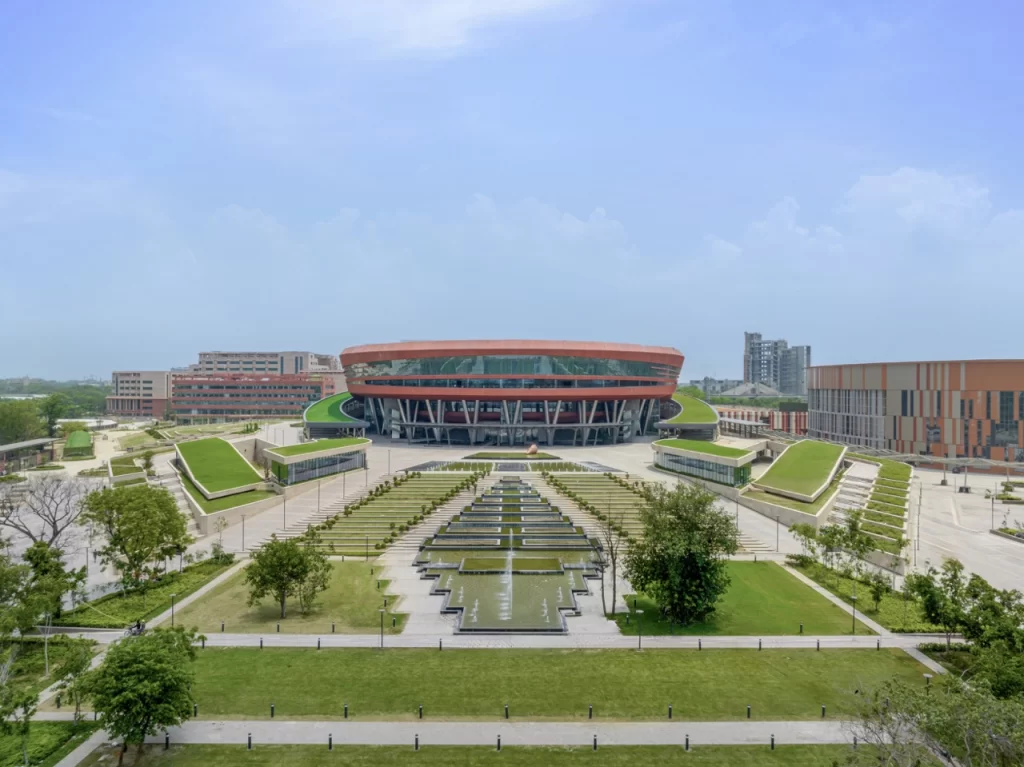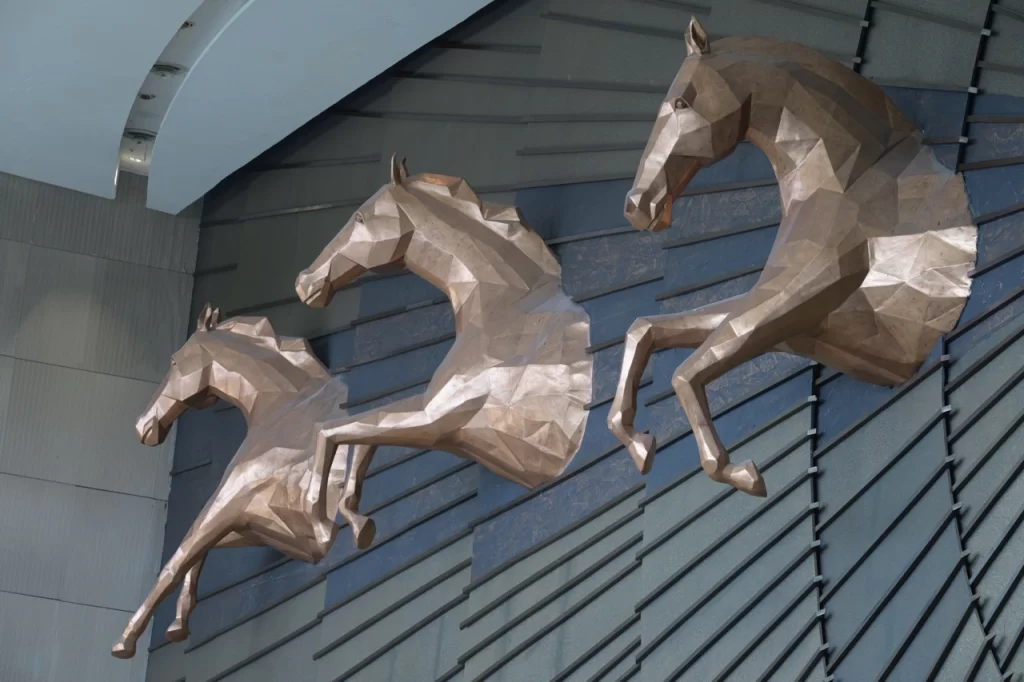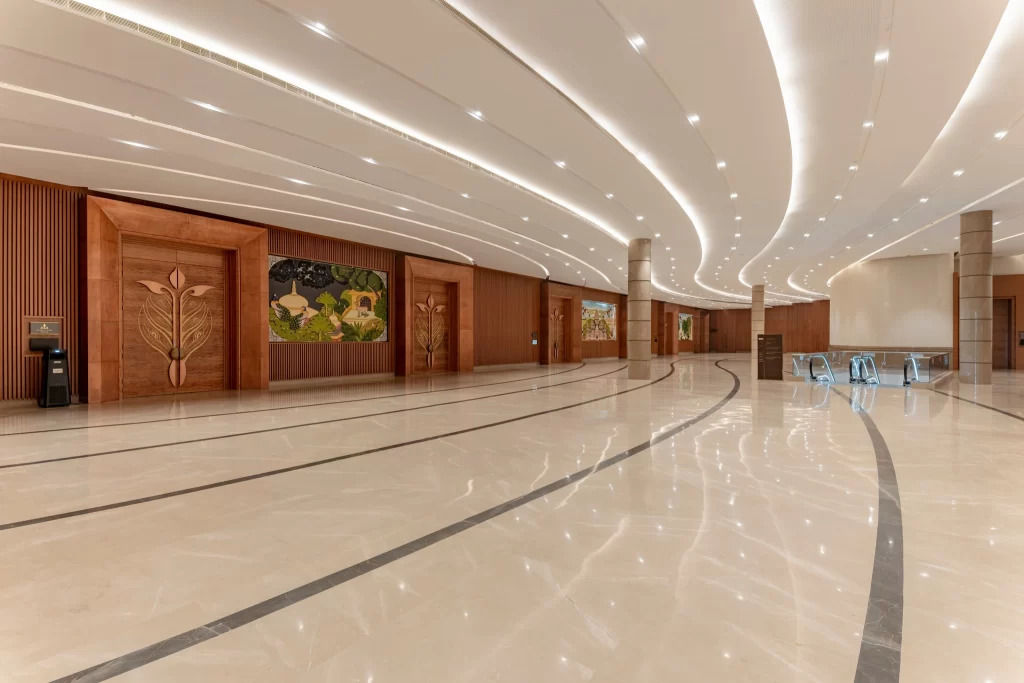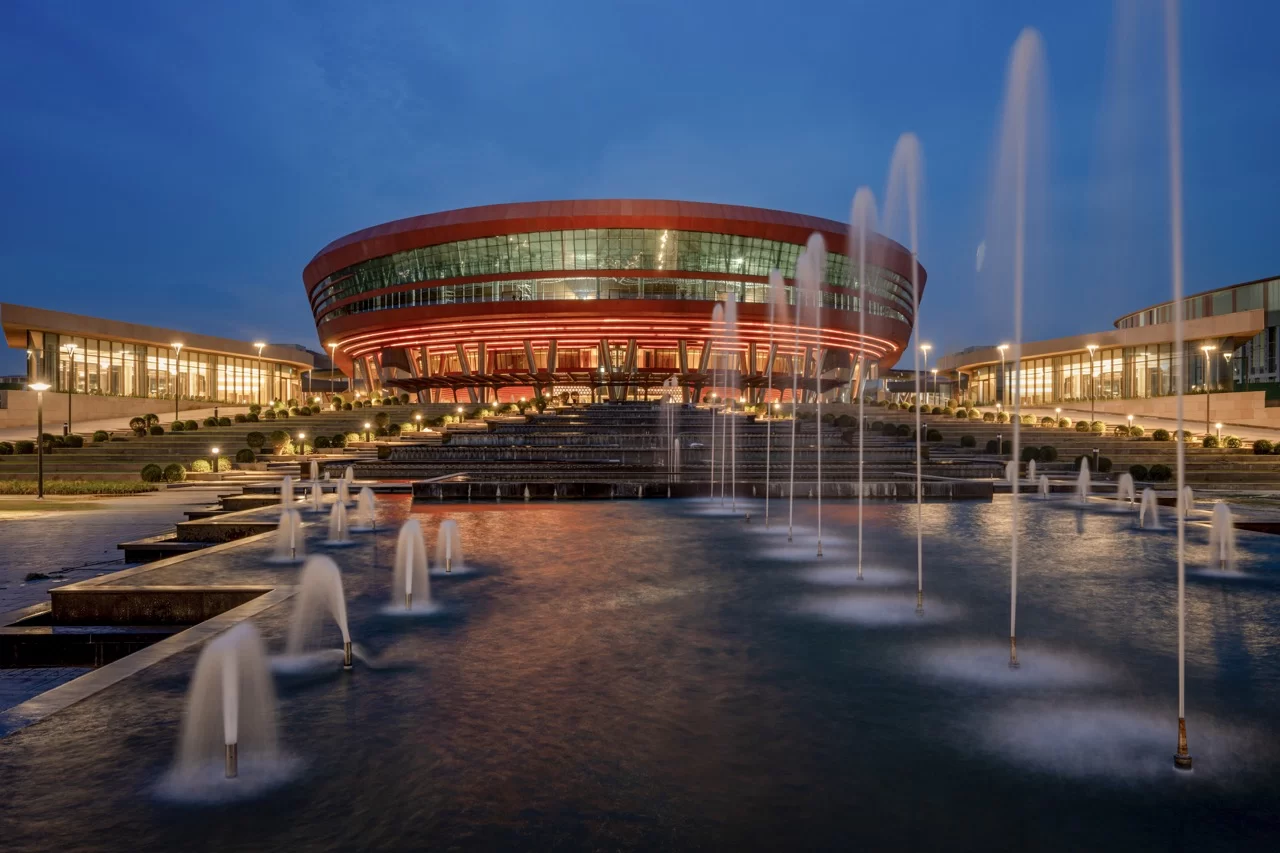Architecture has always been a reflection of a nation’s culture, history, and aspirations. In the heart of the bustling capital city of India, New Delhi, stands a testament to this connection between architecture and identity – the “Bharat Mandapam” at the India Trade Promotion Organisation (ITPO) Complex. This architectural marvel not only showcases India’s rich heritage but also embodies the spirit of innovation and modernity that the country strives to achieve.
A Glimpse into the India Trade Promotion Organisation (ITPO) Complex:
The India Trade Promotion Organisation (ITPO) Complex is a sprawling hub for trade exhibitions, conventions, and events. Situated at Pragati Maidan, the complex has played a pivotal role in hosting numerous national and international events, contributing significantly to India’s trade and commerce landscape. At the heart of this complex lies the “Bharat Mandapam,” a structure that seamlessly blends tradition and modernity, creating a captivating architectural narrative.
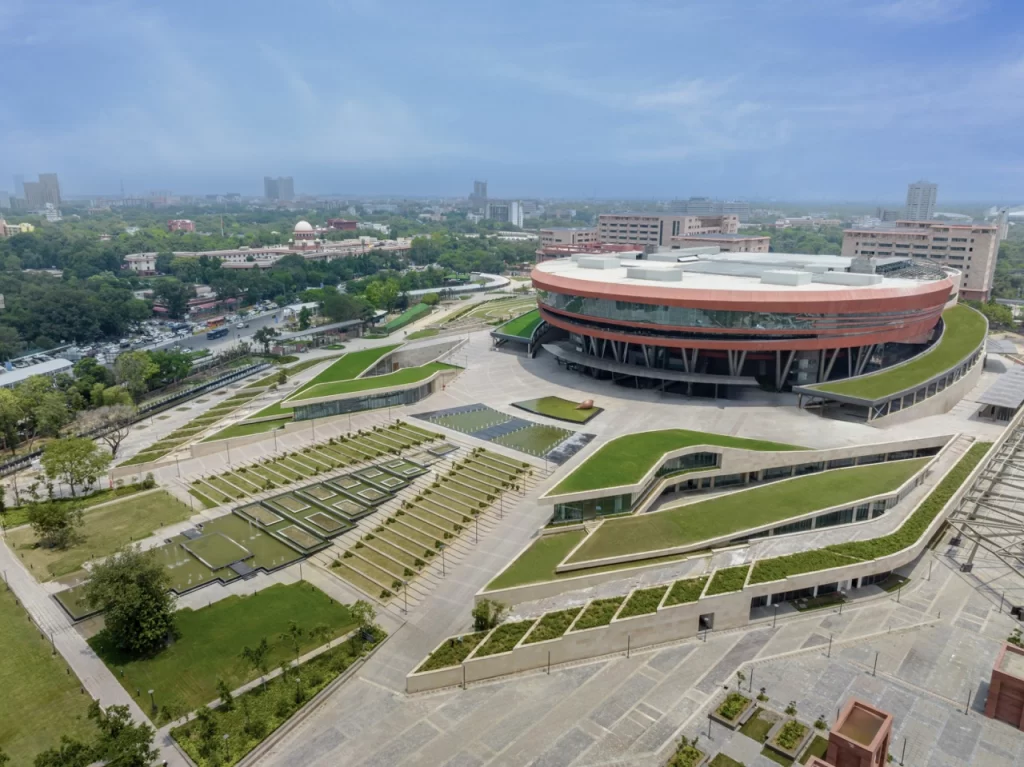
Architectural Fusion:
The “Bharat Mandapam” stands as an embodiment of India’s diverse cultural heritage. The architects skillfully blended various architectural styles and elements from different regions of the country, creating a harmonious fusion. The exterior façade draws inspiration from the intricate carvings of ancient temples, displaying meticulous craftsmanship. Traditional motifs and patterns are meticulously incorporated into the design, paying homage to India’s rich history and artistic traditions.
Symbolism and Significance:
Beyond its aesthetic appeal, the “Bharat Mandapam” carries deep symbolic significance. The name itself, “Bharat Mandapam,” translates to “Hall of India” in English, emphasizing its role as a platform to showcase the nation’s prowess on a global stage. Each architectural element, from the domes to the columns, tells a story of India’s unity in diversity, inviting visitors to delve into the country’s multifaceted heritage.
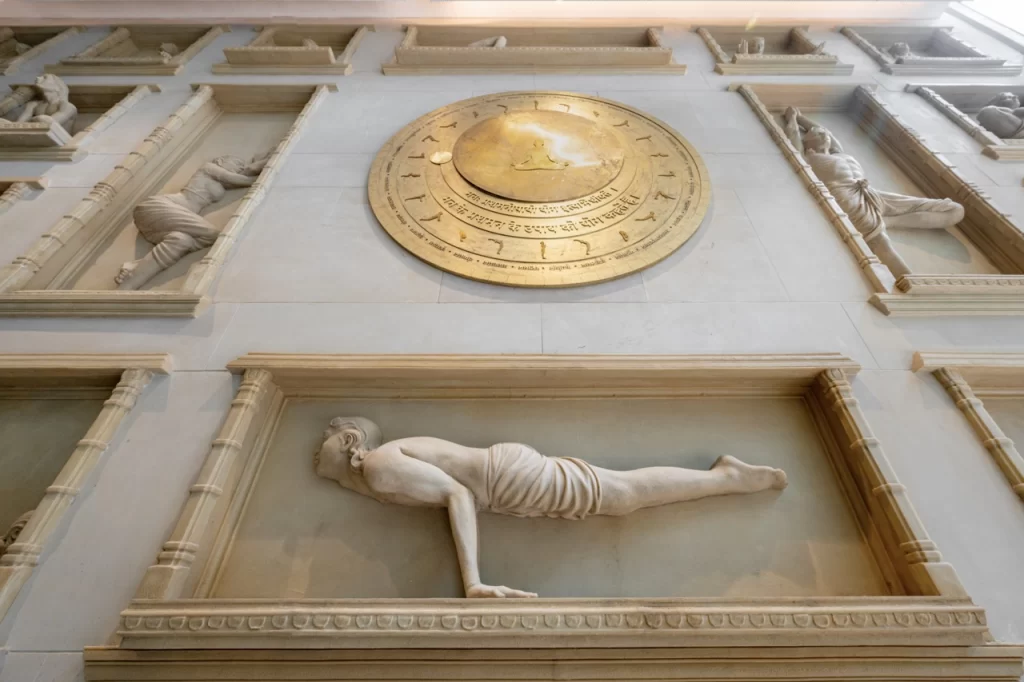
Architectural Elements:
The “Bharat Mandapam” is a masterful composition of architectural elements that span centuries. The domes, reminiscent of Mughal architecture, add a sense of grandeur and elegance to the structure. They evoke the timeless beauty of monuments like the Taj Mahal, connecting the present with India’s historical past. The intricate lattice work, known as “jali,” adorns the walls, casting captivating patterns of light and shadow, reminiscent of the patterns seen in ancient forts and palaces.
The columns, another defining feature of the Mandapam, incorporate influences from various regions of India. The richly carved pillars draw inspiration from temples in the South, palaces in the North, and monasteries in the East, creating a visual symphony that celebrates the country’s architectural diversity.
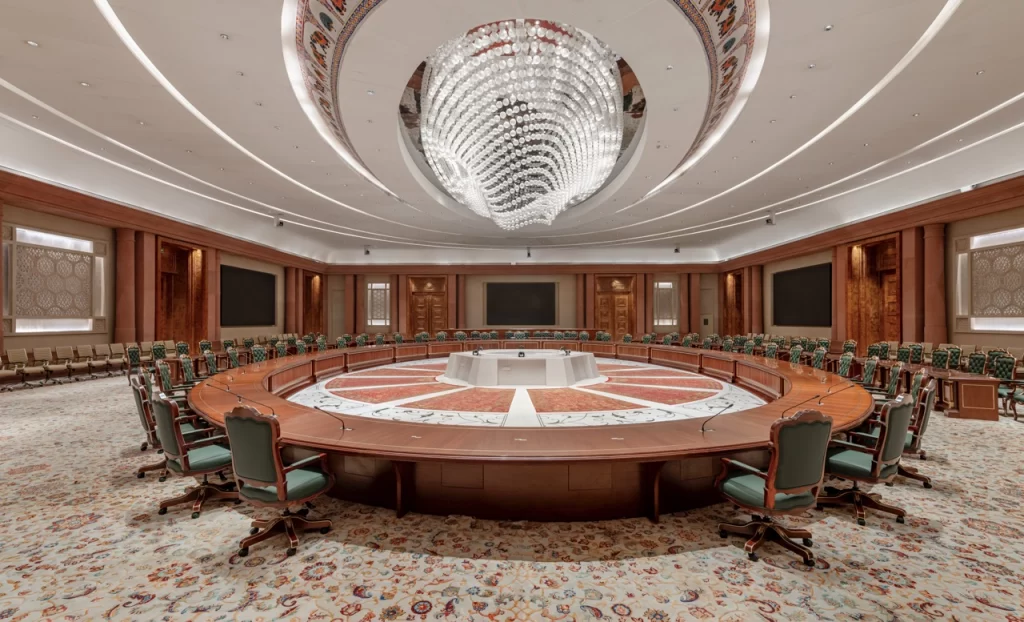
Modern Functionality:
While rooted in tradition, the “Bharat Mandapam” is also a paragon of modern functionality. The architects have seamlessly integrated contemporary technologies and materials into the design, ensuring that the structure is not only visually appealing but also practical for hosting events of various scales. The interior spaces are designed to accommodate exhibitions, conferences, and cultural events, showcasing India’s advancement in event management and infrastructure.
Sustainability and Innovation:
In an era where sustainability is a paramount concern, the “Bharat Mandapam” doesn’t lag behind. The architects have incorporated eco-friendly features, including energy-efficient lighting systems, natural ventilation, and rainwater harvesting facilities. This commitment to sustainability reflects India’s growing awareness of environmental concerns and its commitment to sustainable development.
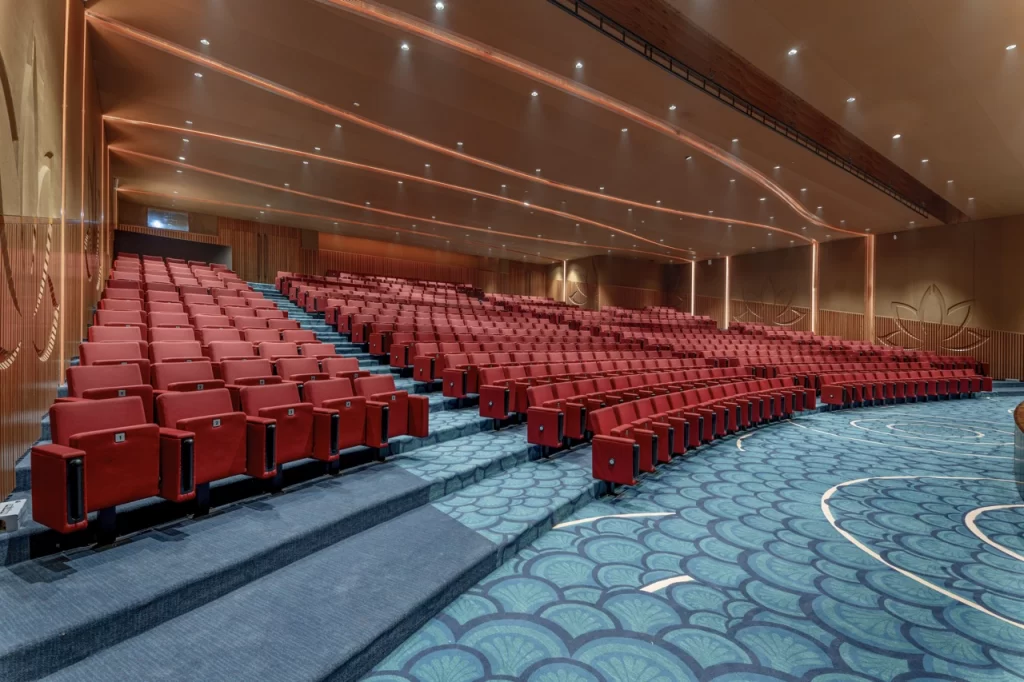
Cultural Showcases and Beyond:
The “Bharat Mandapam” isn’t just a physical structure; it’s a canvas for India’s cultural diversity and achievements. The complex has hosted a plethora of events that celebrate the nation’s art, music, literature, and scientific advancements. From trade expos that highlight India’s industrial growth to cultural festivals that celebrate its artistic heritage, the Mandapam stands as a versatile space that encapsulates India’s vibrant tapestry.
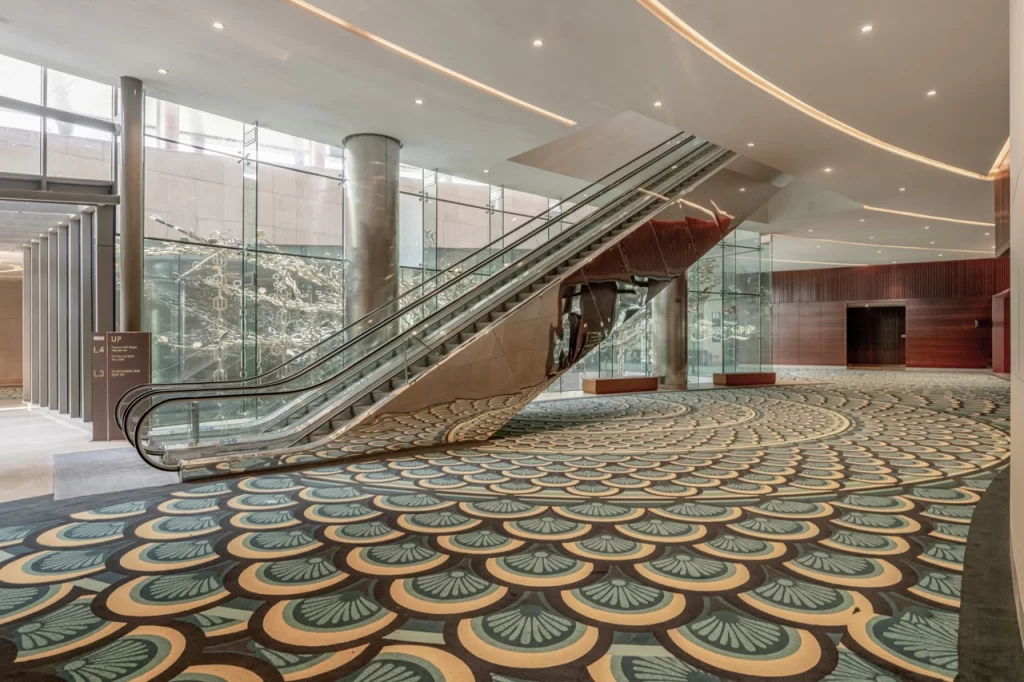
The Way Forward:
As India continues to march forward in the 21st century, the “Bharat Mandapam” remains a symbol of the country’s rich past and promising future. It is a reminder that embracing tradition doesn’t mean resisting progress – instead, it’s about weaving the threads of heritage into the fabric of modernity. The Mandapam showcases how architecture can be a powerful medium to connect generations, cultures, and aspirations.
In conclusion, the “Bharat Mandapam” at the India Trade Promotion Organisation (ITPO) Complex is a true marvel of architectural ingenuity. It harmoniously blends the past and the present, tradition and innovation, and cultural diversity with national unity. As visitors walk through its corridors, they are not only witnessing a grand architectural spectacle but also experiencing India’s journey through time – a journey that encompasses its heritage, aspirations, and the indomitable spirit of progress.
